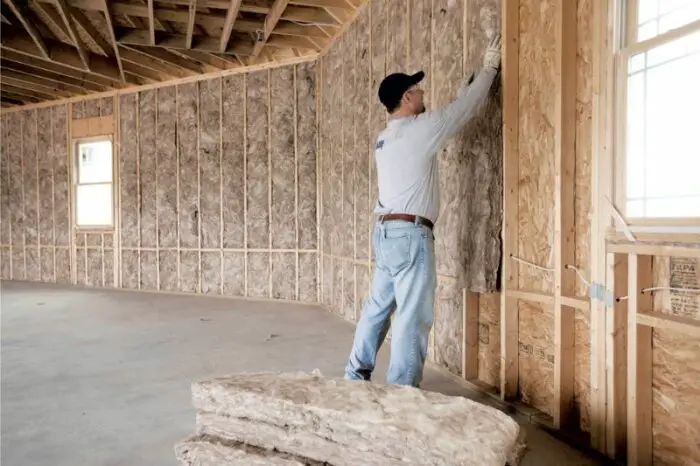When embarking on a home renovation project, insulation is one of the most critical decisions you’ll face. The right insulation can significantly affect your home’s energy efficiency, comfort, and utility bills.
However, the choice can be overwhelming with various materials available — including fiberglass, cellulose, spray foam, and more.
This guide will help you better understand your options, providing insights about each insulation type to determine the best fit for your needs, according to iFOAM in Gardner, Kansas.
Different Types of Insulation
The market offers a range of insulation options, each with advantages and disadvantages. Choosing the right one can be challenging, but we’ll go over that in a second. First, let’s go over some of the most popular types of insulation you can get for your home.
- Fiberglass – Fiberglass insulation is one of the most common materials used in home and commercial construction. It’s usually available in batts, rolled-up pieces of insulation that can be cut to fit specific areas like wiring or pipes. The advantage of fiberglass is its affordability; however, it may not provide as much insulation as some other materials.
- Cellulose – Cellulose insulation is made from recycled paper and treated with fire-retardant chemicals. It’s often used to fill small cavities and hard-to-reach corners, making it a great choice for retrofit projects. Cellulose insulation is also more cost-effective than other types of insulation, like spray foam.
- Spray Foam – Spray foam insulation is popular because it effectively seals small gaps and crevices that other materials can’t fill. It also provides excellent air sealant, which helps conserve energy by reducing drafts and air leakage.
- Rigid Foam – Rigid foam boards are often used to insulate the exterior of homes, particularly when there is no access to the attic or crawl space. It’s highly effective at keeping the temperature inside your home consistent and reducing noise pollution.
Key Differences Between Insulation Types
Each type of insulation has its own unique set of characteristics and benefits. The key differences between the types can be broken down into four categories: cost, installation, R-value, and fire protection.
Cost – Fiberglass is one of the most affordable insulation materials available. Cellulose is also budget-friendly, but spray foam insulation is significantly more expensive than the other two.
Installation – Fiberglass and cellulose are easy to install, making them great for DIYers. Spray foam insulation can be tricky to install on your own, so it’s best to hire a professional if you choose this option.
R-value – R-value measures the insulation’s ability to resist heat flow. Fiberglass and cellulose are both highly efficient, with an R-value of 3.7 per inch for fiberglass and up to 3.0 per inch for cellulose. Spray foam has a higher R-value of up to 6.0 per inch, while rigid foam boards have an R-value of 3.6 per inch.
Fire Protection – Fire protection should be a top priority when selecting insulation materials for your home or business. All four materials are non-combustible and highly fire resistant, but spray foam has the highest fire rating at class A.
How to Choose the Right Insulation for Your Home
Now that you know the basics of different insulation materials, it’s time to choose the right one for your home. Start by considering the climate where you live and what type of energy efficiency improvements you’re looking for.
If you want an insulation material that is less expensive but still effective, fiberglass or cellulose may be the best fit. If cost is not a major factor and you’re looking for maximum energy savings, spray foam insulation is the way to go. Rigid foam boards are ideal for exterior walls since they provide excellent fire protection and keep your home well-insulated.
Conclusion
When choosing the right insulation material for your home renovation project, it’s important to remember that each type has advantages and disadvantages.
Once you have selected the best insulation material for your project, hiring an experienced professional installer is important to ensure a safe and effective installation. With the right insulation, you can enjoy a comfortable home with lower energy bills and improved air quality all year round.


